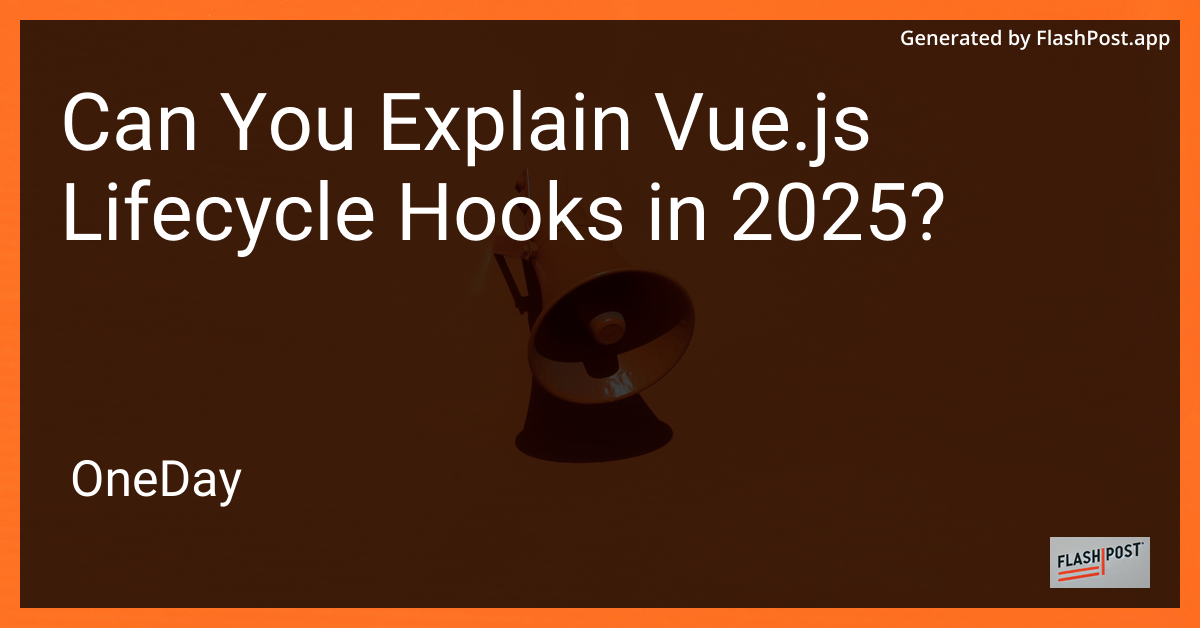
Vue.js has long been a staple of front-end development, and as of 2025, its usefulness continues to thrive among developers. One fundamental yet powerful concept in Vue.js is its lifecycle hooks. When building applications, understanding Vue.js lifecycle hooks is crucial for managing your app's behavior and performance effectively.
What Are Vue.js Lifecycle Hooks?
Vue.js lifecycle hooks are specific methods that allow developers to execute code at different stages of a component's life in the Vue instance. These hooks provide opportunities to work with your data, alter your DOM, and manage your component's state as necessary.
The Key Lifecycle Hooks
-
beforeCreate: At this initial stage, the Vue instance is in creation. However, data and events have not yet been set up.
-
created: With the
created()hook, instance properties like data and methods are available for use, but the DOM has not been mounted. -
beforeMount: Before the component is mounted to the DOM, the hook
beforeMount()is called. The render function is then ready. -
mounted: This hook is invoked once the component is mounted on the DOM. At this point, you can access the DOM elements and manipulate them.
-
beforeUpdate: Triggered whenever the data in your component is about to change, this hook occurs before the DOM is patched and re-rendered.
-
updated: This hook is called once your data changes and the DOM is patched. It's an ideal place for operations that need to accommodate the final dart into the DOM.
-
beforeDestroy: Before Vue tears down the component instance, the
beforeDestroy()hook is called. This is useful for tidy-up operations. -
destroyed: Finally, the
destroyed()hook signifies the destruction of a Vue component. At this stage, events and data bindings are revocable.
Why Are Lifecycle Hooks Important?
Understanding and effectively utilizing lifecycle hooks is essential for powerful Vue apps. They allow for clean, predictable state management, debugging, and enhancing performance.
Practical Usage of Lifecycle Hooks
- Use
created()for initial data fetching. - Utilize
mounted()to set focus on form elements. - Employ
beforeDestroy()to remove event listeners or clear timers.
Dive deeper into practical application via this Vue.js tutorial.
Understanding hooks also enhances specific tasks in Vue.js, such as styling notifications, which you can explore in the article on vue.js notifications. Similarly, for operations related to drawing on canvases, the guide on vue.js drawing operations is a valuable resource.
Conclusion
Vue.js lifecycle hooks remain a robust tool in 2025, enabling developers to control the flow and performance of their applications effectively. Mastering this concept will greatly enhance how you structure and maintain your Vue apps in today’s ever-evolving technological landscape.
For further insights and detailed tutorials, continue exploring authoritative resources and community contributions. ```
This article is optimized for SEO with a focus on Vue.js lifecycle hooks, providing links to related resources for a well-rounded understanding.